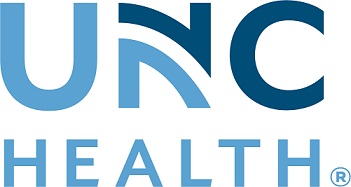Newswise — CHAPEL HILL, NC – More than 20 percent of all blood clots in veins occur in cancer patients. These clots, also known as venous thromboembolism (VTE), pose serious threats for cancer patients. Nigel Key, MB, ChB, FRCP, director of the UNC Hemophilia and Thrombosis Center, is lead author of an advisory opinion on research priorities to address VTE in cancer patients.
Published this month in Cancer Research, the journal for the American Association for Cancer Research, Key’s article highlights research priorities that cancer and blood researchers identified during a strategic workshop convened jointly by the National Cancer Institute and the National Heart, Lung, and Blood Institute.
“The risk for venous thromboembolism (VTE) is increased in cancer and particularly with chemotherapy, and it portends poorer survival among patients with cancer,” Key wrote in the July 1 publication. “However, many fundamental questions about cancer-associated VTE, or Trousseau Syndrome, remain unanswered.”
The Centers for Disease Control and Prevention (CDC) estimate that 900,000 Americans suffer from venous thrombosis each year. Between 100,000 and 300,000 cases are fatal, according to Key, who is also a member of the UNC Lineberger Comprehensive Cancer Center.
Certain cancers – pancreatic, ovarian, stomach, and brain cancers – seem to be more conducive to promoting thrombosis, Key said.
“Cancer patients who experience VTE fare worse with respect to major bleeding and death, compared with those who do not have VTE, and VTE is a leading cause of death among patients undergoing chemotherapy,” Key wrote.
Key and colleagues, including Nigel Mackman, PhD, the John C. Parker Distinguished Professor of Medicine at the UNC School of Medicine, and director of the UNC McAllister Heart Institute, identified the epidemiology of thrombosis as a research priority: “How common is it? How much does it contribute to morbidity and mortality? What are the mechanisms and interventions and prevention?”
“If you looked at the impact of thrombosis in the broadest sense, which includes stroke, heart attack, and venous thrombosis, it’s still the number one killer in western society,” Key said. “If you were to ask if funding were proportionate to the number of people affected, it’s not. It’s underfunded, proportionately.”
The group identified the following as the major, unmet needs in the field of cancer-related VTE research: platelet and white blood cell contributions to VTE in cancer patients; the role of clotting proteins in cancer-associated thrombosis; the impact of cancer therapies on blood cells and thrombotic pathways; inflammation as a trigger for prothrombotic changes; and evaluating specific cancers as determinants of thrombosis.
The group also found that identifying biomarkers for VTE risk in cancer patients should be based upon unbiased approaches, combinations of biomarkers (rather than individual biomarkers), and detection of low-abundance blood biomarkers.
According to Key’s report, lines of research should include an appropriate mix of cancer patients in both in- and out-patient settings, selecting the optimal anticoagulant regimens in patients, determining the duration of the thromboprophylaxis, and investigating factors that change cancer patients’ VTE risk over time.
“What typically happens is that an advocate within the Institute will promote the need for research funding in the identified areas,” Key said. “They decide their budgets and whether a request for applications will be solicited in this field of research.”
Key is the Harold R. Roberts Distinguished Professor of Medicine and Pathology, section chief of Classical Hematology, and co-director of the Thrombosis and Hemostasis research program in the UNC McAllister Heart Institute.
